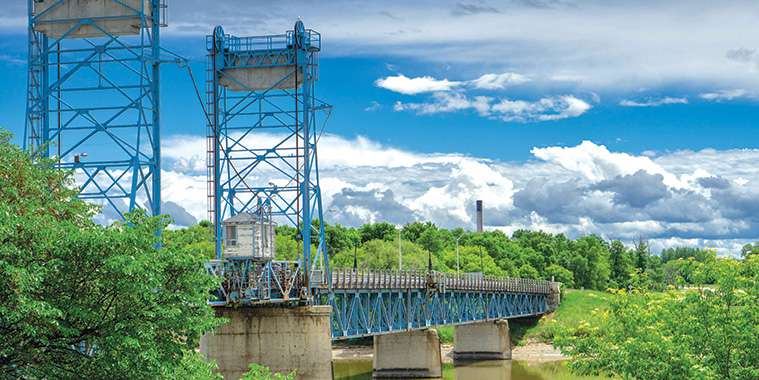By Geoff Kirbyson
The City of Selkirk has taken control of its destiny with the purchase of a giant swath of land that will be developed over the next 30 to 50 years.
The City will oversee the development of the 326.5 acres, which is located in the city’s west end, with most of it dedicated to residential with the remainder earmarked for commercial purposes.
“We will be shaping the direction of the community going forward rather than having things happen (to it),” said Tim Feduniw, director of sustainable economic development for the City of Selkirk. “The biggest thing is the opportunity. It’s not reacting to a market boom but anticipating an opportunity to build our community.”
The cost of the land is $3.2 million but he said it’s a small price to pay today for the long-term benefits.
Purchasing the land enables the city to hive off portions to a mix of developers, ensuring each area will have a different look than the next one, he said.
While it remains to be seen what the new neighbourhoods will ultimately look like, there is no doubt that they’ll be environmentally friendly.
“One of the biggest things we’re proud of is our commitment to sustainability. We just did a major solar initiative on our recreation facility. We recognize the importance of climate change. How can we build subdivisions that fit that and build a community in a sustainable way with sustainable infrastructure?” he said.
Selkirk’s population, which is approaching 11,000, has been growing at about one per cent annually for the last three years. Feduniw said all indications point to that trend continuing.
The land, which is located south of the Walmart to Selkirk Avenue and from Highway 9 to the railway tracks, is enough to double the city’s population.
The City will make a point, however, of not interfering with a pair of new subdivisions, both of which are in the early stages of developing about 100 single-family lots each.
The land purchase harkens back to a similar move more than a century ago when community leaders formed the Selkirk Development Company and bought 450 acres on the southern outskirts of town. About 30 of the acres were offered to a company that had outgrown its space in St. Boniface, about a half-hour to the south. The rest was earmarked for residential development to house the newly-employed workers.
That company was the Manitoba Rolling Mills — known today as Gerdau — which broke ground on its new land in 1913. Today, the steel mill employs nearly 450 people in Selkirk.
Mike Scatliff, principal with Scatliff + Miller + Murray Urban Designers, who have been consulting with Selkirk officials on the land purchase, said it will allow Selkirk’s future growth to evolve at a pace that suits its character, culture and commitment to sustainability.
“They can prepare today for 30 years from now and two years from now. They can be prepared. They’re very developer-friendly now. They’ve set themselves up to partner with developers in a way that I think developers will really like,” he said.
Scatliff knows what he’s talking about it. His firm was responsible for designing a number of subdivisions in Winnipeg, including The Oaks, Assiniboine Landing, Royalwood and Buffalo Plains.
Selkirk isn’t reinventing the wheel here. Feduniw points to success stories in Medicine Hat and Saskatoon, which made significant land acquisitions to meet their strategic development goals. Medicine Hat, for example, not only banks land but it also serves as its own developer. The money generated through the land sales is used to improve the community, such as construction of a performing arts centre and a family leisure centre.
geoffkirbyson@mymts.net



